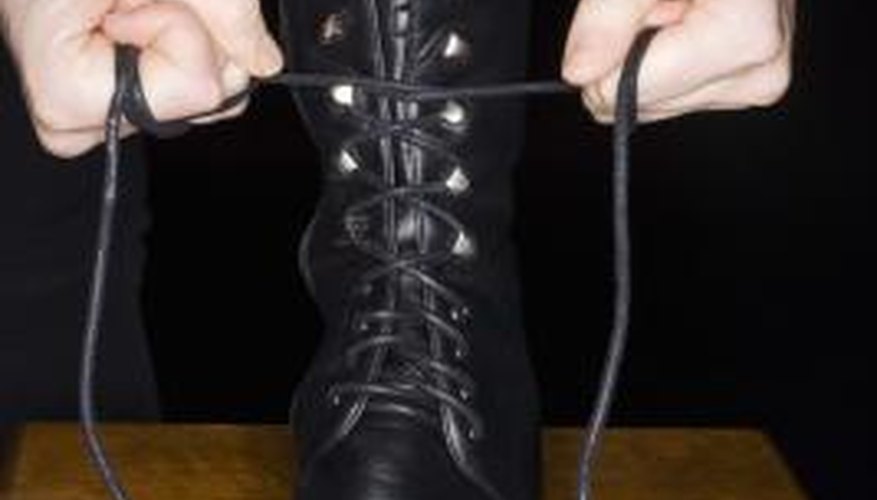Eyelets are the holes attached or punched into shoes, allowing laces to go through. When shopping for shoes and belts online or in a catalogue, the description for these items may also include a description of the specific eyelets used. Each eyelet has its own advantages and disadvantages, so it is useful to know the different types before deciding on the shoe that suits your needs.
Punched
Punched eyelets are the most common type of eyelets, particularly on sneakers and dress shoes. These eyelets are simply punched into the shoe's upper material, often reinforced with metal grommets. Though these eyelets are the most discreet, and the most appropriate for dress shoes, they have a tendency to rip out with heavy use and over-tightening.
Webbed
Webbed eyelets are loops of fabric sewn into the upper material of a shoe. These types of eyelets are often used in cycling and dance shoe; these activities put a lot of pressure on the foot, and the fabric eyelets are lighter and more comfortable than metal eyelets. The disadvantage of webbed eyelets is their tendency to tear and rip, especially if you pull the laces too tightly.
- Eyelets are the holes attached or punched into shoes, allowing laces to go through.
- The disadvantage of webbed eyelets is their tendency to tear and rip, especially if you pull the laces too tightly.
D-Ring
D-ring eyelets are heavy-duty metal loops which are riveted to the shoes' upper material. They are similar to webbed eyelets in that the shoelaces pass through the loops, but, being made of metal, they are obviously more durable than fabric eyelets. D-ring eyelets may be uncomfortable when travelling long distances, as they create pressure points on the foot.
Hooked
Hooked eyelets consist of a hook attached to rivets or grommets, often used for the top three or four rows of eyelets on boots or skates. When the hook is attached to a punched eyelet with a metal grommet, you have the option of threading your shoelaces as normal or winding them around the hook. Hooked eyelets speed up the process of shoelace tying and untying, since winding shoelaces around a hook is faster than threading them.
